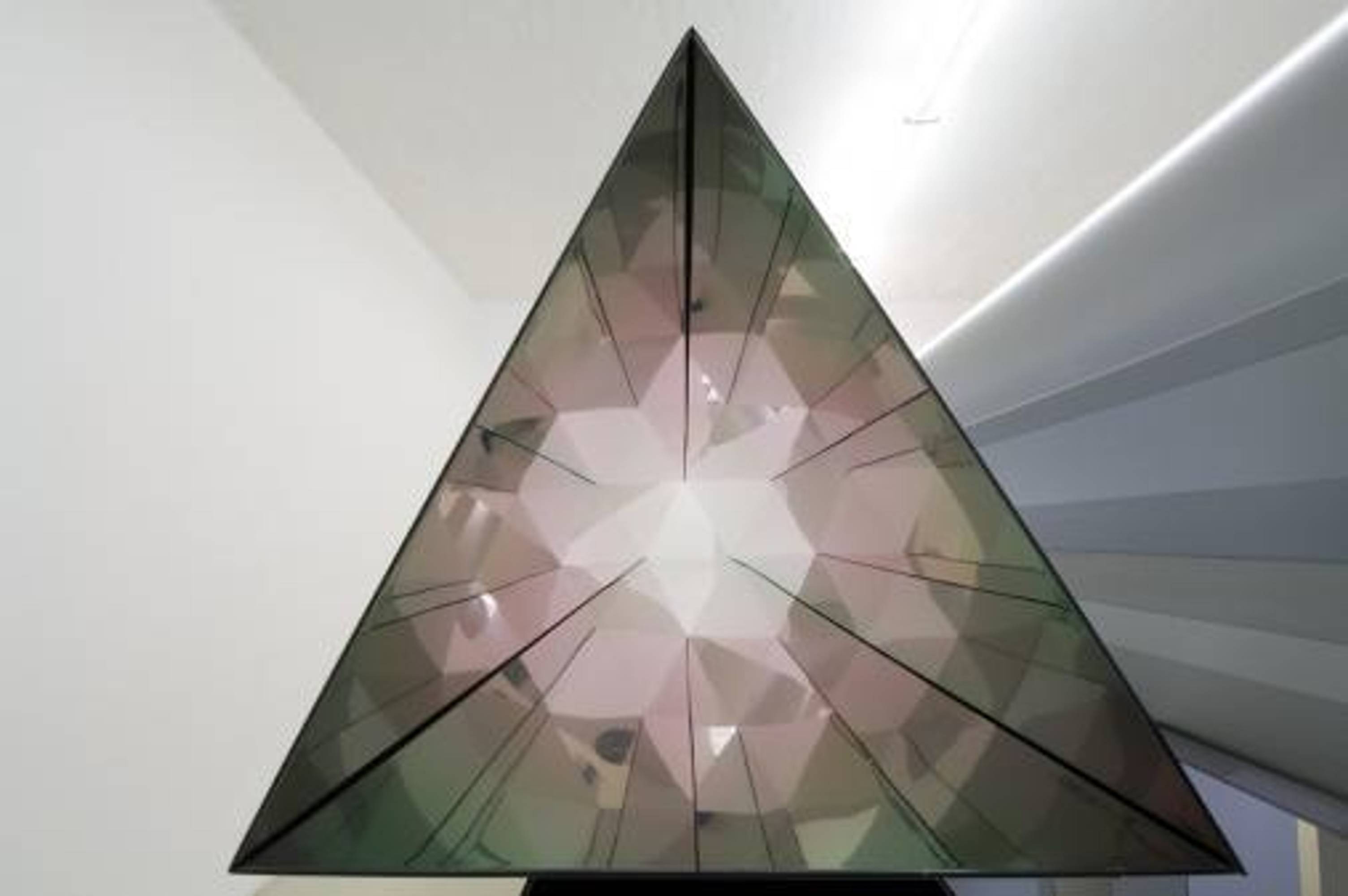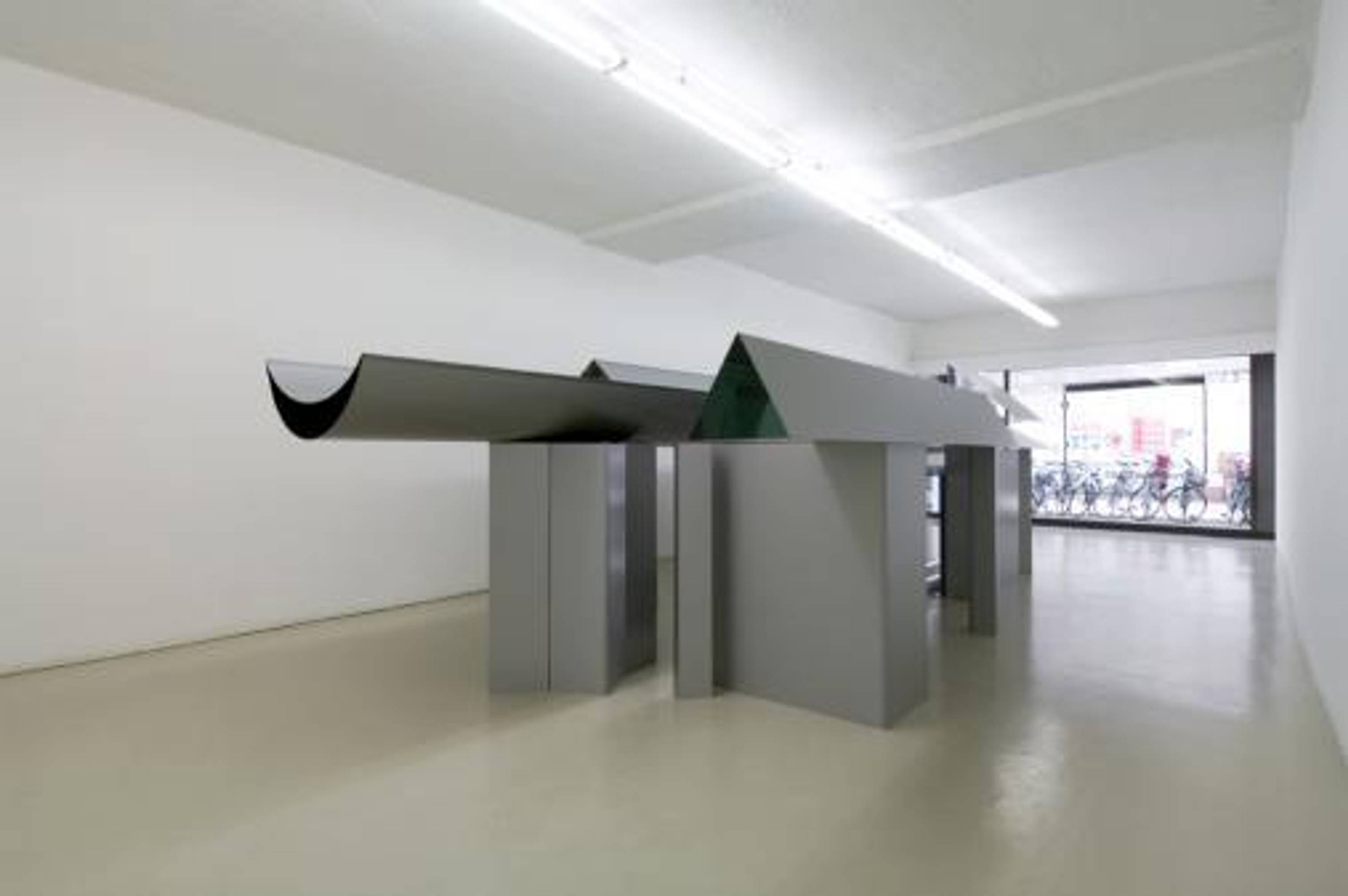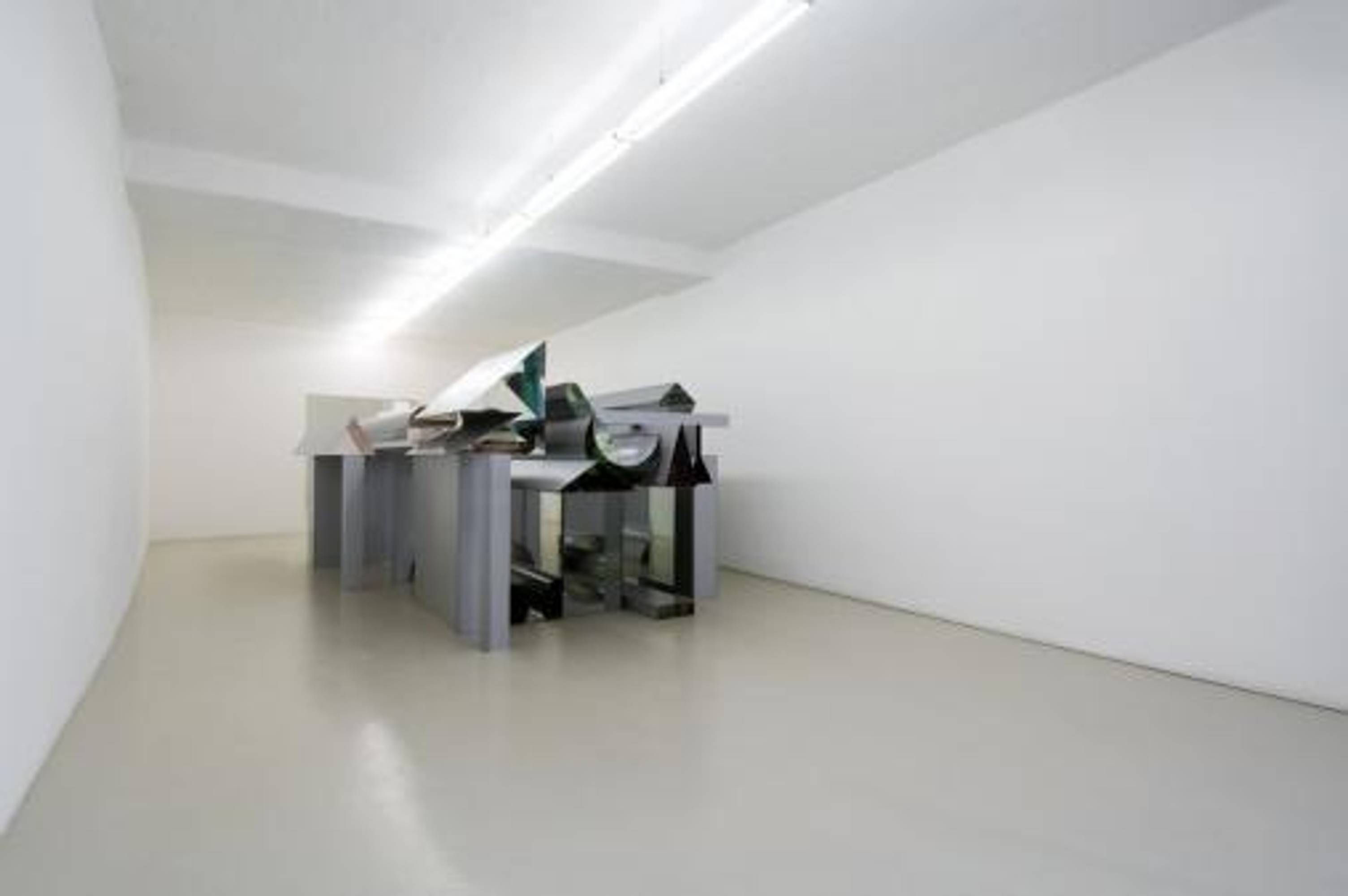LA PRODUZIONE DELLA COSTRUZIONE
Philipp Messner
Curated by Sabine Gamper
On the occasion of his solo show in the Gallery Museum Philipp Messner (born in 1975 in Bolzano, lives and works in Munich) creates a large-size, room-filling sculpture that consists of many single pieces. These pieces will be assembled by the artist as a construction of architectural character depending on the room’s requirements. The single bodies consist of a alluminum and synthetic material interconnexion, coated on both sides to obtain a glassy surface, in such a way that the surface of the sculpture reflects itself on the inside, generating a kaleidoscope effect, and at the same time reflecting the environment on the outside. Thus, the observer will see an ever changing game of reflections, mirrorings and doublings, that will continiously catch the eye and challenge it.
Messner’s works are conceptual, they focus on function, form and surface, and through their huge size they involve the observer with his physical and psycic presence. Messner’s objects distinguish themselve by the direfully precise and exact treatment of these most delicate and smooth surfaces. They are exclusively made of industrial materials and are manufactured in an industrial manner. Thus, these works function as mirrors which the artist uses to get us to look at ourselves.
Formally considered, Philipp Messner’s sculpture refers to former works in which he dealt with flags in their symbolically visualised forms, for example the movable wall partition „Arsenale“ of his show in the Tyrolean Art Pavillon in Innsbruck 2006, or his performance „flah back“ that was presented for the first time on the occasion of the International Performance Festival 2006 in Trent, as well as his filmwork „Flash Flag“ (35 mm, 15 “, 2006), a cinematic piece in which the flags of the UN member states were reduced to Black and White and were shown in such a rapid cinematic projection that the eye had barely time to discern the individual symbols from each other. This work will be shown every day throughout the exhibition in the Filmclub of Bolzano.
In his artistic approach Philipp Messner reduces, deconstructs, makes collages, overlaps, and samples. He deletes what is superflous and reduces picture schemes to a minumum, he dissects the ensemble to its smallest pieces and puts different parts together again to obtain a virtual ensemble. His aim is to make the art object an experimentation ground on which a unique experiment can be carried out again and again: an experimental examination of the observers perception regarding the fiction of the surface.
Starting from the point of religious and political symbols and their proportions, Philipp Messner has developed for his construction in the Gallery Museum single elements as hollow bodies capable of including the geometrical forms of the star, the halfmoon, the cross, the rectangle (for the coloured areas) and so on.
By the alternating of hollow spaces and limitation areas the perception of the observer oscillates between two and three-dimensionality. It is here that the question of authenticity, reality and image will be raised. Regarding the geometry of the surface, as well as the schemes and materiality, these objects refer to the esthetics of Minimal Art or to Constructivism. It is not Messner’s intention to trace the form back to its beginning and to purify it of its embellishments as it was the task of the interwar and postwar artists. Messner reduces in order to focus as exact as possible his inquiries into the relation between form and perception.
The central topic of Philipp Messner’s artist work is to challenge human perception. The crucial point is the question of our expectation attitude in the light of what we see; it is about images and their identity-establishing function. Philipp Messner is not working with forms and flags to make an active political statement, but to explore, for example, the Flag as a form of highly concentrated visual symbolic content. Therefore it can be seen as a prime example of symbolic shaping, something that provides meaning and significance. From the Flag, to begin with, to the formal language of our architecture, the design of our cars and clothes etc., these artificial artifacts define our real space as morphemic elements and create, at the same time, “psycho-spaces” that greatly effect our existential orientation.
Every visual perception produces virtual connections in our head, docking at the reservoir of memories full of stored visual information. Coinstantaneously it awakens our feelings that stand in connection to them. Within this context arises the question of affiliations and standards. Messenr’s project ” Haus in Gröden” ( 2003) took the same line. Overnight he built an optical mock-up of an average family house in Gardena, so posing the question of reality and appearance. Or, in other words, the question of the appearance of reality.
Messner’s interest is not the object itself, but rather the object as morphemic element, its context, the question of the attitude and perspective of the of the viewer. Through his work Messner deconstructs putative truths, aiming to unmask the “Construct” of reality. with his interventions he challenges us to review, scan and rearrange our perception of reality in regard to its functioning. By this means he challenges to check our perceptive and cognitive skills. In this way, Messner creates forms that are always bridges, making connections between what we are and what we see. Between these two the event of construction of identity takes place.



